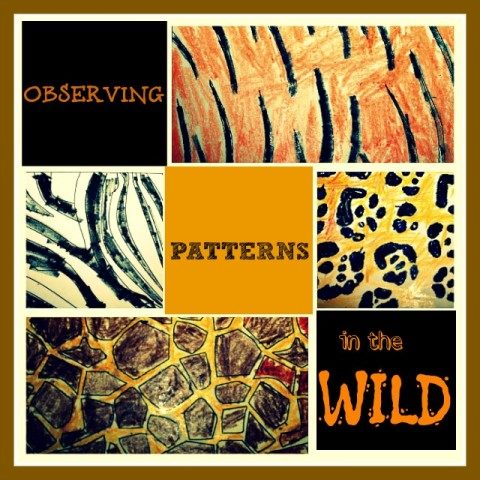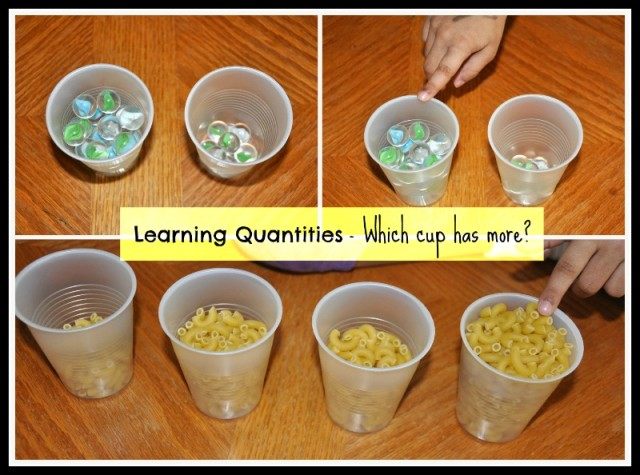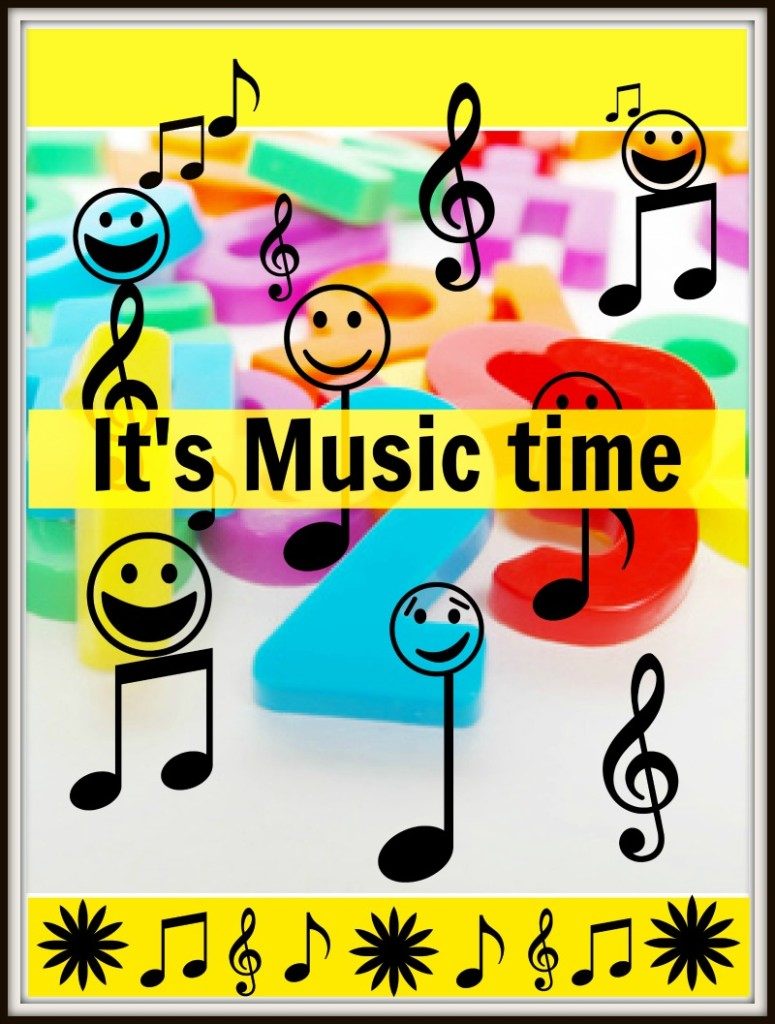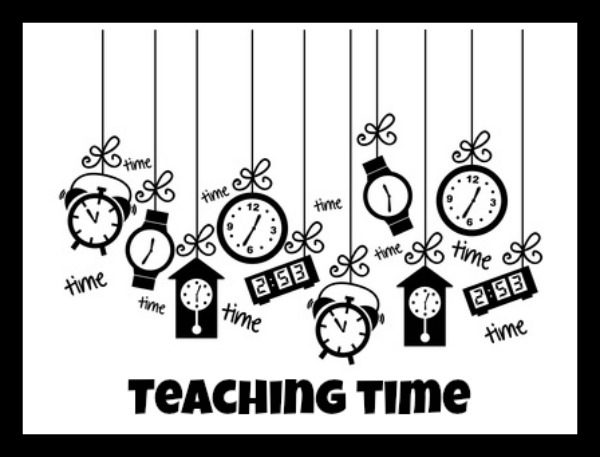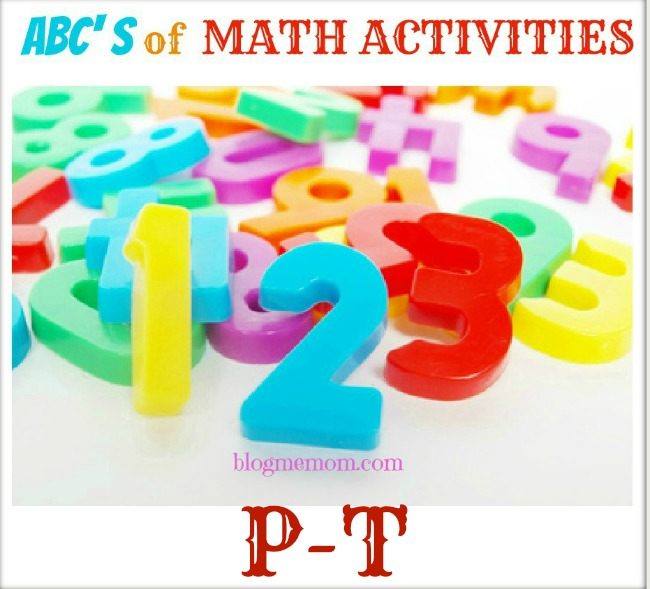
To read the first three parts of this series visit the following links. Part 1, part 2 and part 3.
P is for Patterns
We see patterns all around us. Patterns to a preschooler is something that’s repetitive and is in an order. It’s a basic concept that is the foundation for life-long mathematical skills.
Identifying patterns around us:
Flowers, animals, clothes, jewelery, shoes, floor tiles and many more. With a little bit of practice your child will start discovering patterns from around us that you don’t even see.
We have done an interesting activity about patterns from Animals we know.
The simplest exercise to introduce and teach patters are using colors and shapes.
-
Using colored beads
Expand the play with three or more colors and different order.
-
Using colored shapes blocks
Expand the activity with three or more shapes and different order. Make your own patterns and creations.
Here are some more fun ways from your favorite bloggers:
- Kindergarten Math: Patterns and Algebra with Block Printing : Lessons Learnt Journal
- Patterning with Pool Noodles: Mama Pea Pod
- Pretzel patterns – learning during snacktime : Teachmama
- Pattern Naturally – Kindergarten basics
- Use dice to stamp patterns or easily turn it into an addition activity.
Q is for Quantities
What is quantity? – In simple terms it means measure or amount of.
How much of…? is the basic understanding when we talk about Quantity. For toddlers and preschoolers quantity is counting and determining the accuracy of the result. It is also essential to the understanding of the concepts of more and less , few and many.
- To elaborate: make two sets of objects and have them judge which has more items and which has fewer.
Children’s understanding of numerical and non-numerical abilities vary and experiments like these help them build their cognitive abilities and guide them and help them master the skills they need for later demanding years.
Here is a few more from your favorite bloggers:
R is for Rhymes
Nursery Rhymes are perfect for teaching kids basic math skills. Counting, Order, Patterns, Subtraction and Quantities and more.
They also teach kids
- Phonics
- Rhyming Words
- Build vocabulary
- Music
- Teach Story Telling and characters
We have a few all time favorites.
- Baa Baa black sheep ( Counting )
- 12345 once I caught a fish alive( Order and sequence )
- The Ants go Marching ( Counting )
- Five little ducks( Subtraction )
- 1 – 2 buckle my shoe ( Counting )
- Five little monkeys jumping on the bed ( Subtraction)
- 1 little 2 little 3 little Indians ( Ascending and Descending order)
- Simple Simon met a Pieman ( Money)
- One Potato Two Potato ( Order)
- This Old man ( Counting and Pattern)
- Hot cross buns ( Money)
- Wee Willie Winkie (Time)
- Five little soldiers ( Number bonds)
- Ten little fingers & ten little toes ( Parts of your Body-For the Baby)
- This little Piggy ( Counting Toes – For the Baby)
Rhyme time is our favorite on the road activity to do. It always keeps my 4yr old’s spirits up. It’ s funny to hear her make up her own songs and rhymes to keep her little sister cheerful.
Visit your local library and find more music and fun songs and rhymes.
S is for Shapes
With a toddler around, we have done a fair share of shapes activities. Take a look! A simple craft project can be turned into a fun learning opportunities with a few twists. All the images below are clickable and will take you to the respective posts.
Around Halloween, we carved shapes out of a pumpkin and made a fantastic pumpkin puzzle. Great for toddlers and pre schoolers.
For Thanksgiving we ofcourse did a turkey craft. Not just any turkey craft, a shapes turkey craft. While making this craft the kids’ listening and learning ears were much sharper than they would have been if I had sat down simply with a paper and pen and drew shapes.
For Christmas, we made shapes Christmas trees and explored proportions while we were at it.
Seeing that contact paper fun is the best kind of fun for a toddler we went ahead with another shape activity which was by far the biggest hit in our household.
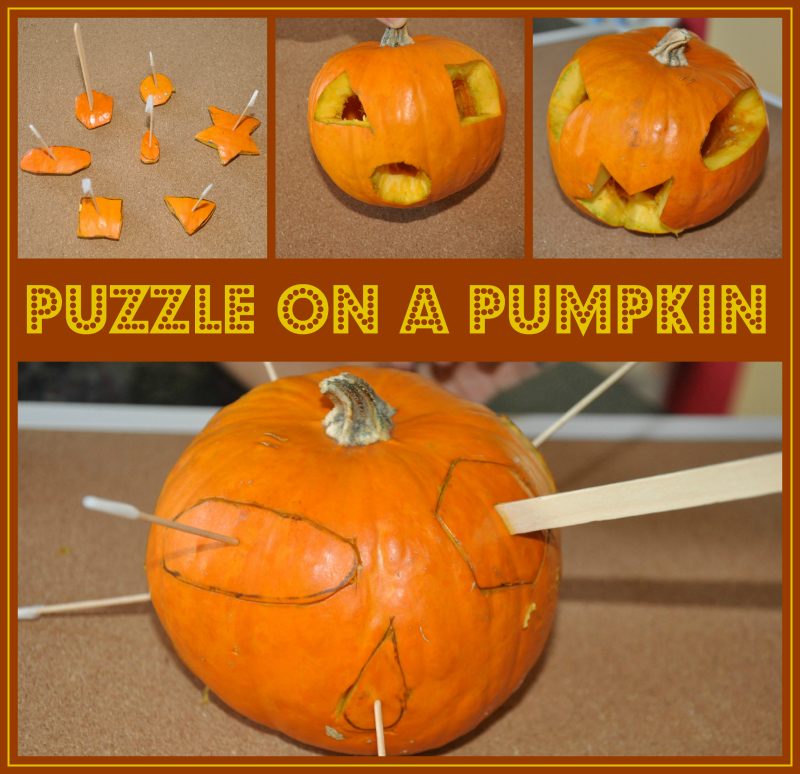 |
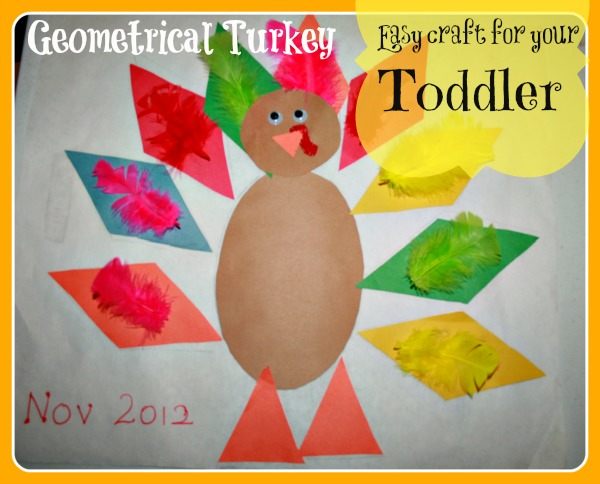 |
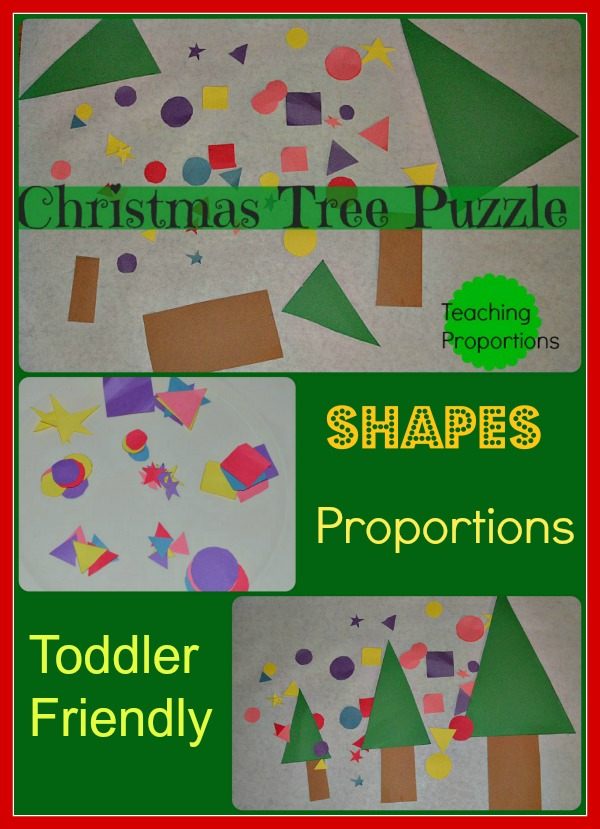 |
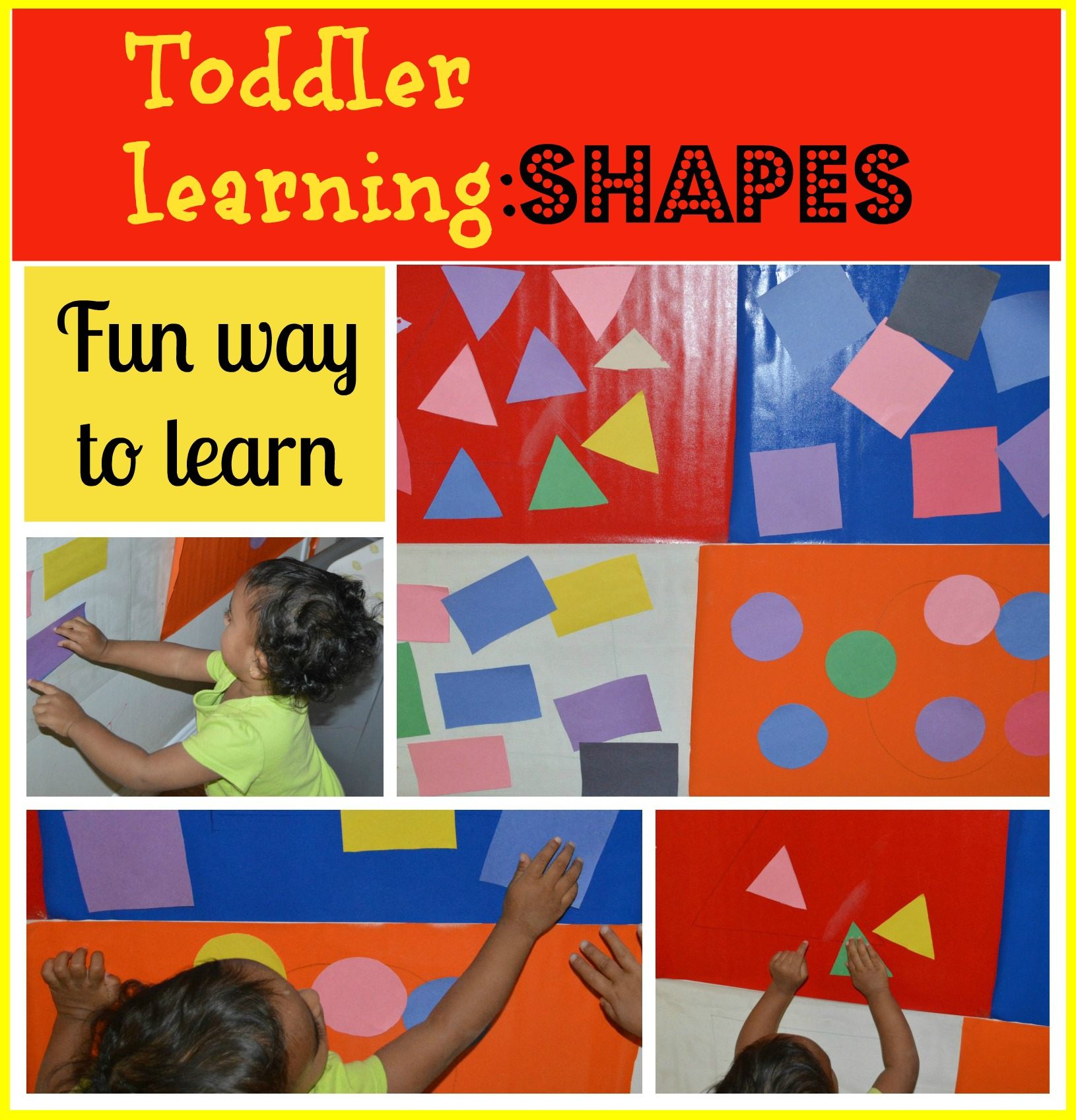 |
T is for Time
Technically a child cannot tell time until he/she knows skip counting in 5’s or 5 times table. With all the clock crafts only the concept of number recognition is addressed. Having said, it is never too early to introduce them to the concept of time. At 4 and 5 years old kids can be introduced to time with chore charts and the time each activity happens. This teaches them about the concept of time if not time telling per se.
Kids are anyway intrinsically interested in time because we are using that word numerous times in a single day.Think about it!” Time for bed, time for dinner, time out, quiet time, time to wake up, time for the bus, if you are lucky potty training mother like me ( woo hoo!) time for potty.
This is how we teach time: Make an association of the daily routines to the time of day.
- Morning – Time to wake up, Brush, Breakfast and School
- Afternoon – Lunch, Nap, Quiet time
- Evening – Play time, Homework time, time for mommy or daddy to get home from work
- Night – Dinner time, Bed time.
|
MY DAILY ROUTINES |
|||||
Morning |
Potty |
Brush |
Dress up |
Breakfast |
School |
Afternoon |
Wash up |
Lunch |
Nap |
||
Evening |
Play time |
Home work |
Wash up |
Dinner |
|
Night |
Bath |
Pajamas |
Brush |
Story time |
Zzzzz’z |
It helps them understand that Time is constantly changing and the clock is ticking. Once they know about the schedules they are quick to realize about time and question – ” Mommy, what time is it ?”. Once they know their math, we can move to hours and minutes.
The easiest way to get them into idea is to make a Paper Plate Clock. Visit Frugal Fun for Boys for more details. With the corresponding minutes written, time telling should get interesting for the kids. For an exhaustive post on time telling activities, visit here.
Click here for the final part of the series
Thanks for reading
Please take a moment to comment
Thanks for stopping by our little space here. We encourage you to stick around and take a look at couple of our popular posts.
[divider top=”0″]
Follow us on Pinterest for more kids activities. If you love play based learning and enjoy doing activities with your kids, Pinterest truly is the place to be: For parents, educators and care-givers.
[divider top=”0″]
This post is a part of a ABC series brought to you by 70+ bloggers and hosted at “This Reading Mama“. Check out her blog and thanks for the amazing work she has put into organizing this event. Kudos to her!
Look at all the topics other bloggers have covered
LEARNING THROUGH PLAY
- Baking with Kids from Life at the Zoo
- Bath Activities for Kids from Bath Activities for Kids
- Discovery Bottles from Teach Preschool
- Farming for Children from Glittering Muffins
- Fitness for Kids from 3 Dinosaurs
- Imaginative Play from Train up a Child
- Kids Activities from Growing a Jeweled Rose
- Learning Through Play from Love Play & Learn
- Learning Toys & Manipulatives from This Reading Mama
- Movement Activities for Young Kids from AngeliqueFelix.com
- Play Dough from The Imagination Tree
- Playing with Light from Graham and Parker
- Preschool Play from Its Our Long Story
- Sensory Bins from Royal Baloo
- Sensory Play from Creative Play House
- Toddler Activities from Toddler Approved
- Winter Outdoor Play from Pleasantest Thing

